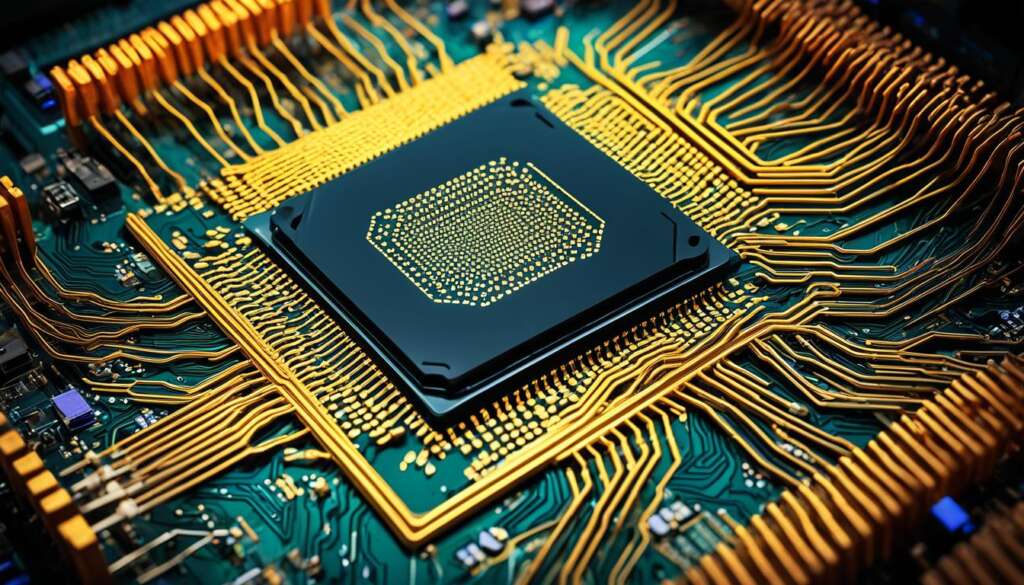Table of Contents
The kernel is the essential foundation of an operating system (OS) that manages the hardware-software interaction and system resources efficiently. It serves as the core component that provides basic services for all other parts of the OS. The kernel acts as a bridge between user applications and hardware, facilitating communication and managing tasks such as process and memory management, file systems, device control, and networking. It plays a vital role in system startup, loading the kernel into memory, and transferring control from the BIOS. Without a functioning kernel, the computer will be unable to start completely or at all.
Overall, the function of the kernel is to enable users and applications to interact with the computer, launch and manage applications, and manage the underlying hardware devices.
Types of Kernels: Monolithic, Microkernel, and Hybrid
Kernels play a crucial role in operating systems and can be classified into different types based on their architecture. The three main types of kernels are monolithic, microkernel, and hybrid.
Monolithic Kernels
Monolithic kernels, such as those found in Unix, Linux, and OpenVMS, have all operating system services operating in the kernel space. They provide efficient and tight integration between the kernel and other OS components. However, monolithic kernels can be less stable and more difficult to maintain due to their complex and interconnected nature.
Microkernels
Microkernels take a different approach by delegating user processes and services to different address spaces outside the kernel. This design prioritizes reliability and flexibility. Examples of microkernel-based operating systems include Mach and L4.
Hybrid Kernels
Hybrid kernels, such as Windows NT and Apple XNU, combine the best features of both monolithic and microkernel architectures. They offer a balance of speed, design, modularity, and stability. Hybrid kernels provide a flexible and modular structure while still achieving efficient performance.
Each type of kernel has its own advantages and disadvantages. Monolithic kernels offer efficiency and tight integration but can be less stable. Microkernels prioritize reliability and flexibility but may have performance overhead. Hybrid kernels combine the benefits of both architectures, striking a balance between speed, design, modularity, and stability.
Understanding the different types of kernels allows us to appreciate the variety of approaches taken in the design of operating systems, each catering to specific needs and priorities.
Comparison of Kernel Types:
| Kernel Type | Advantages | Disadvantages |
|---|---|---|
| Monolithic | Efficient and tightly integrated | Less stable and more difficult to maintain |
| Microkernel | Reliable and flexible | Performance overhead |
| Hybrid | Balance of speed, design, modularity, and stability | N/A |
Kernel Panic and Types of Kernels Continued: Nano Kernel and Exokernel
Kernel panic is a severe computer malfunction that occurs when the operating system’s kernel encounters an unrecoverable error. This unexpected error brings the system to a halt, preventing potential damage and providing an opportunity for debugging. Several factors can contribute to kernel panic, including improper memory access, software glitches, and hardware issues.
Continuing with the discussion on kernel types, two noteworthy variations are the nano kernel and exokernel. Nano kernels, exemplified by KeyKOS, prioritize reliability and security by focusing on privileged hardware code. These extremely small kernels embody simplicity and efficiency, offering a minimalistic approach to kernel design.
On the other hand, exokernels, such as the ones found in the ExOS and XOK operating systems, offer hardware-level resource management at the application level. These kernels eliminate unnecessary abstractions, providing direct access to hardware resources and enabling customization. By minimizing the layers of overhead, exokernels enhance performance and efficiency.
Each type of kernel, be it the traditional monolithic kernel, microkernel, nano kernel, or exokernel, serves specific purposes and presents trade-offs in terms of functionality, reliability, security, and performance. It is essential to consider these factors when selecting an appropriate kernel for an operating system.
FAQ
What is the function of the kernel in an operating system?
The kernel acts as the core component of an operating system, providing basic services for all other parts of the OS. It manages tasks such as process and memory management, file systems, device control, and networking. It facilitates communication between user applications and hardware, enabling users and applications to interact with the computer and manage applications.
What are the different types of kernels in operating systems?
There are three main types of kernels: monolithic, microkernel, and hybrid. Monolithic kernels, like those found in Unix, Linux, and OpenVMS, have all operating system services operating in the kernel space. Microkernels, such as Mach and L4, delegate user processes and services to different address spaces, prioritizing reliability and flexibility. Hybrid kernels, like Windows NT and Apple XNU, combine the behaviors and benefits of both monolithic and microkernel architectures. Each type of kernel offers different advantages and trade-offs in terms of efficiency, stability, and ease of maintenance.
What is kernel panic?
Kernel panic is a computer malfunction that occurs when the operating system’s kernel encounters a severe, low-level error that it cannot resolve. It halts the system to prevent potential harm and allows for debugging. Factors contributing to kernel panic can include improper memory access, software glitches, and hardware issues.
Are there any other types of kernels worth mentioning?
Yes, there are two more types of kernels: nano kernels and exokernels. Nano kernels, like KeyKOS, are extremely small and focus on privileged hardware code, prioritizing reliability and security. Exokernels offer application-level hardware resource management and allow customization, minimizing abstractions and improving performance. Each type of kernel serves specific purposes and offers different trade-offs in terms of functionality, reliability, security, and performance.









